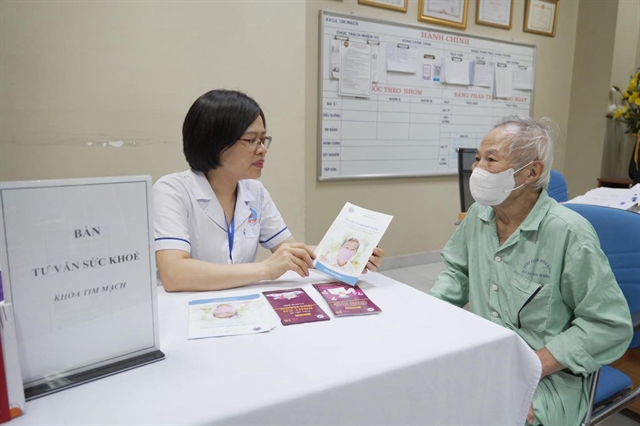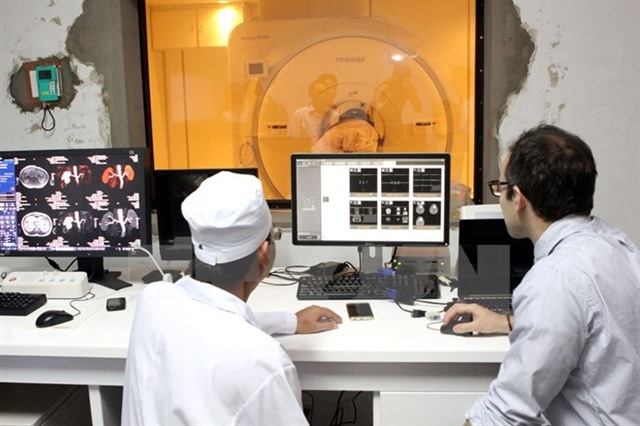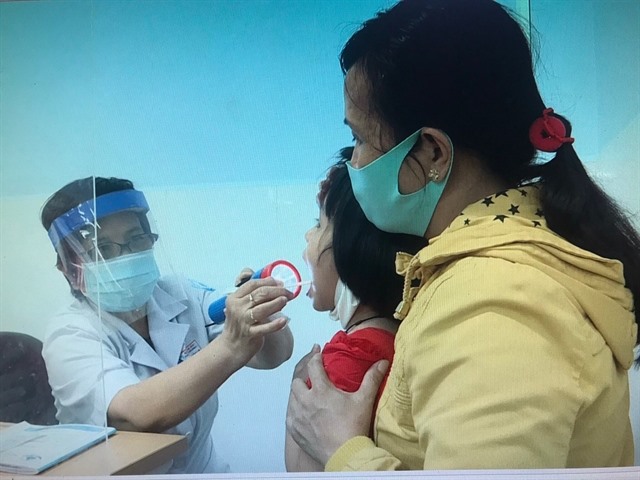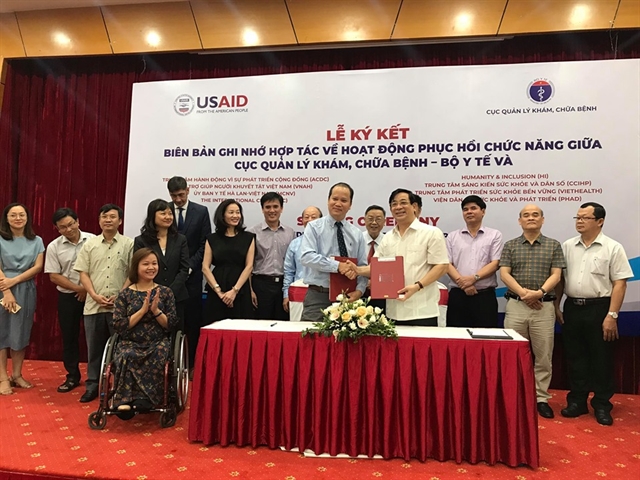
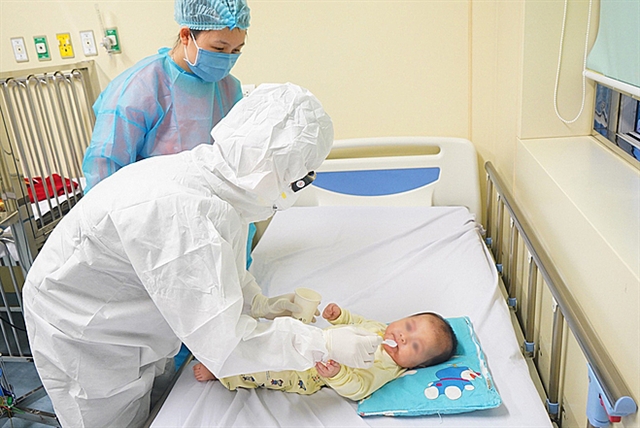
|
| A nurse (in white) takes care of a baby at the National Children's Hospital in Hà Nội during the COVID-19 outbreak. — Photo suckhoedoisong.vn |
HÀ NỘI — Việt Nam needs to train more nurses starting now since it has been forecast that, with its ageing population, there will be a shortage of 40,000-50,000 of them by 2030.
Phạm Đức Mục, president of the Việt Nam Nurses Association, told a meeting held recently in Hà Nội that the country now has around 140,000 nurses.
The State of the World’s Nursing 2020 says Việt Nam has only 11.4 nurses per 10,000 people, less than half the global average.
Mục called for efforts to reach a rate of 25 by 2025.
It was also necessary to have a road map to ensure that all nurses reach at least college level by 2025 as recommended by the World Health Organisation, he added.
Việt Nam’s demography entered the ageing period in 2011.
It is forecast that the percentage of seniors will rise from the current 11 per cent of the population to 18 per cent by 2030 and 26 per cent in 2050, the Ministry of Health has said.
The numbers mean there is a need to improve both the quality and quantity of the nurses to better serve the needs of the population in the future.
There are around 196 universities, colleges and vocational schools to train nurses, Trần Thuỵ Khánh Linh, head of the nursing department at the HCM University of Medicine and Pharmacy, said.
Nguyễn Minh Lợi, deputy head of the ministry’s Science and Technology Department, said the ministry is renewing all education and training programmes so that it could achieve the target of getting all nurses to graduate at least from college by 2025.
Working overtime
Assoc Prof Nguyễn Thanh Bình, president of the Việt Nam Union of Health Workers, said the current doctor-to-nurse ratio in Việt Nam is 1:1.4 whereas WHO’s recommendation is 1:4.
The shortage of nurses means many have to work overtime often, according to Bình.
Medical staff, including nurses, have had to work nearly four hours overtime on average daily since the COVID-19 pandemic hit.
The long working hours are thought to severely affect their health.
But despite this they are not paid well enough.
A 2019 study by the Health Strategy and Policy Institute found that "87.4 per cent of healthcare workers thought their work required heavier responsibility and carried greater pressure than other jobs."
They also said their working environment was dangerous and carried the risk of diseases.
Some 65 per cent said their incomes did not fully cover their living expenses. Some 59.7 per cent said they were not satisfied with their salary while 24.8 per cent said the same about their allowances, the study said. — VNS



